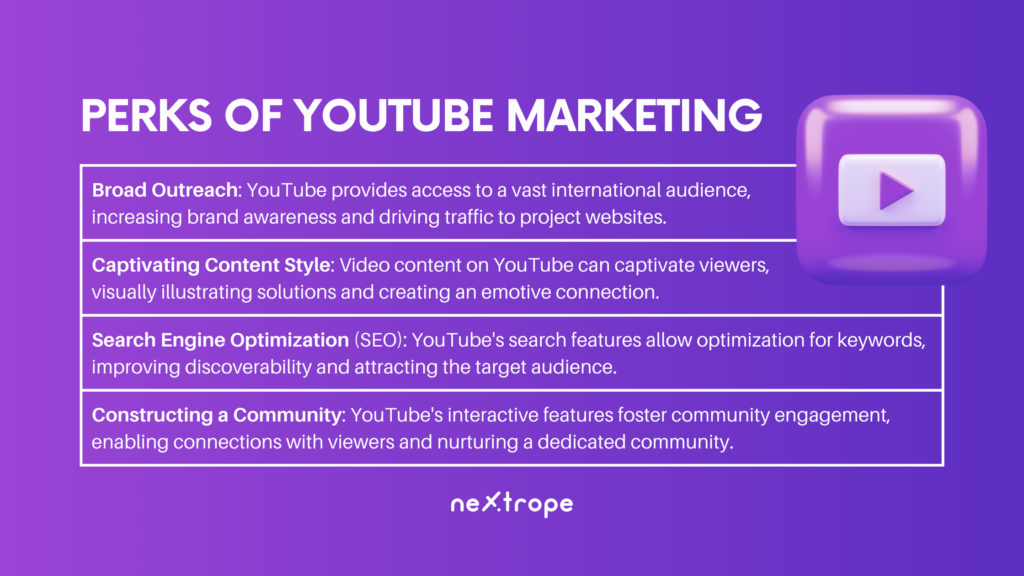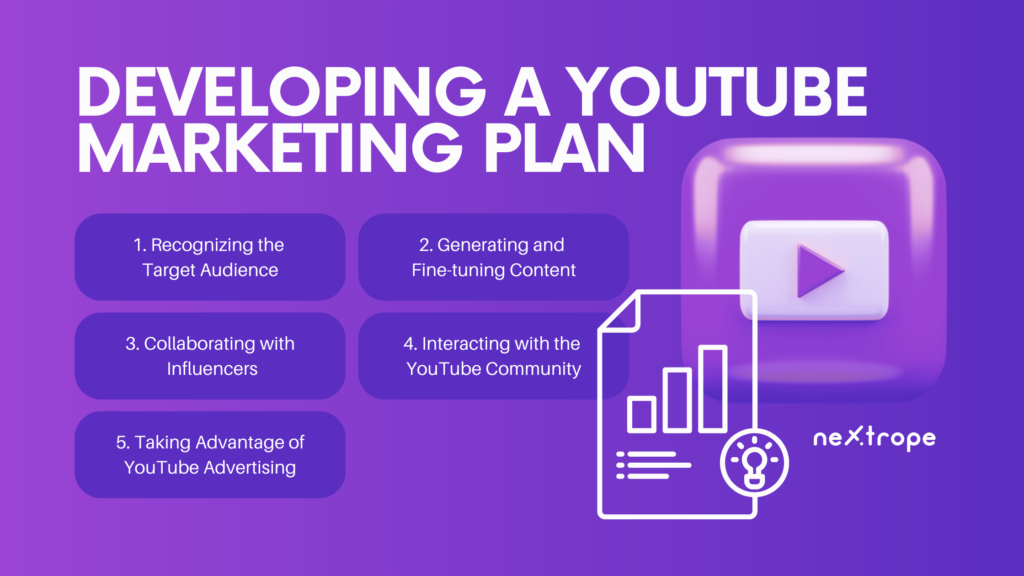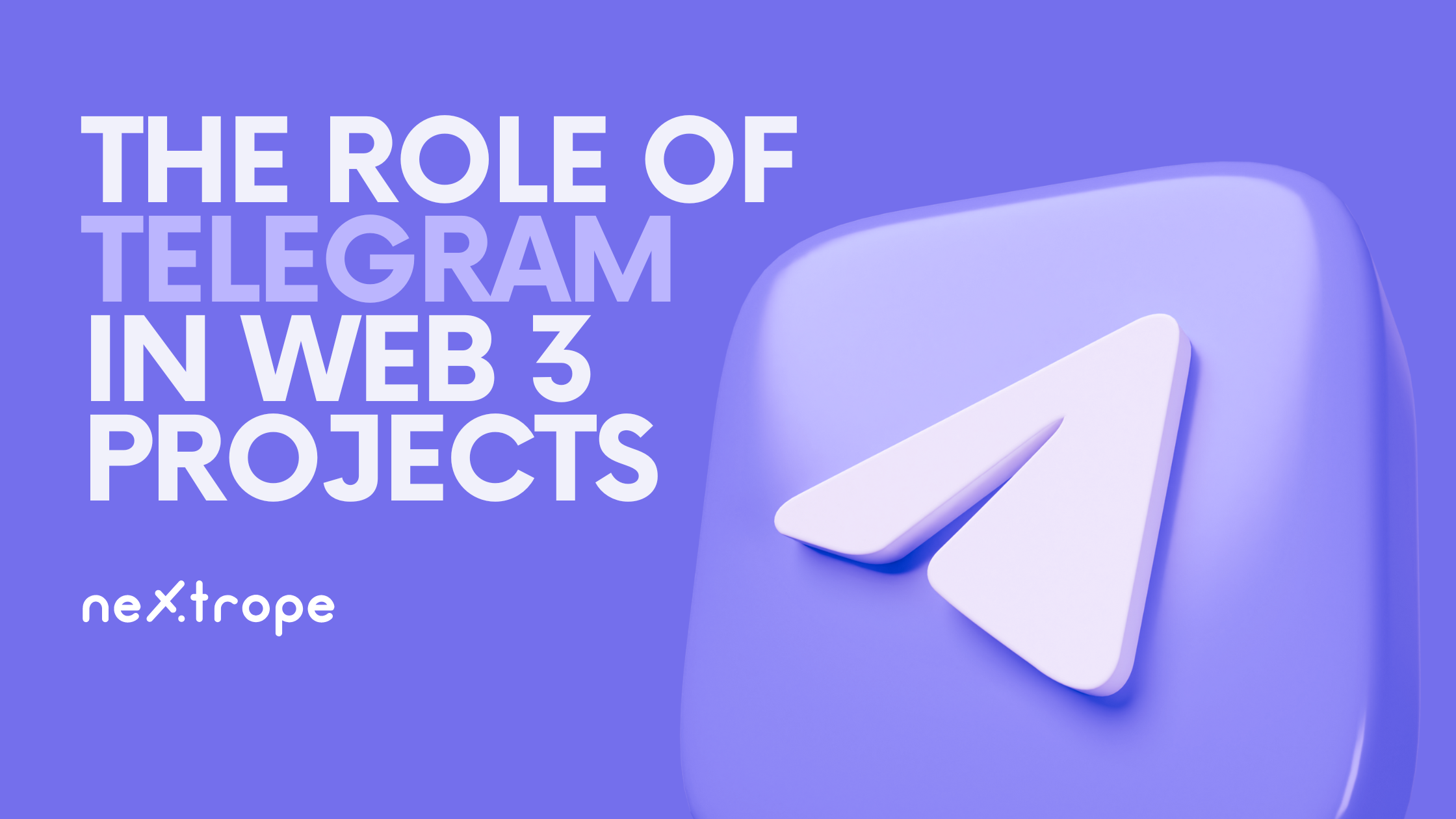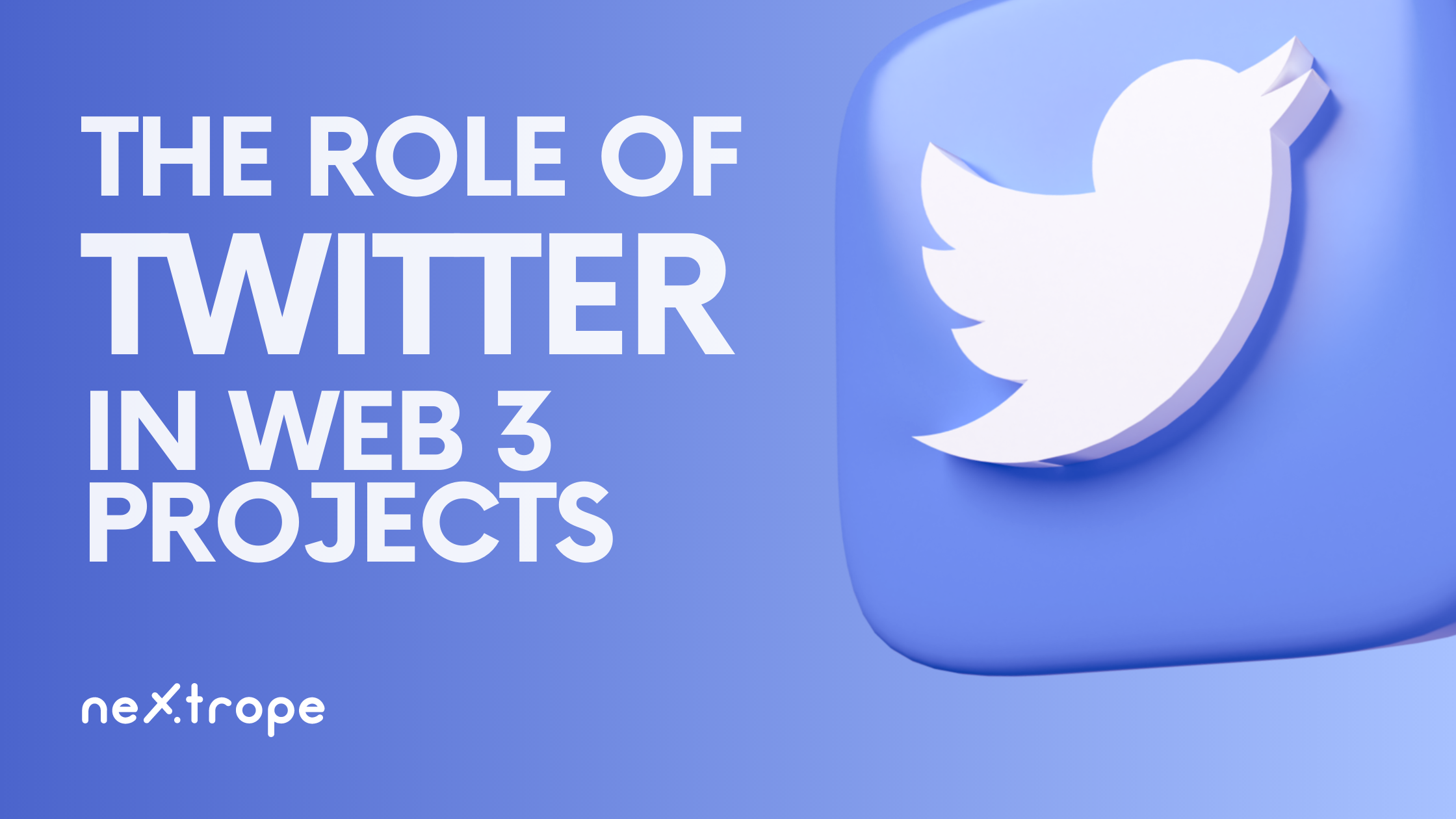In the constantly changing realm of technology and digital advancements, a new wave of groundbreaking Web 3 projects has emerged, incorporating blockchain, artificial intelligence (AI), and cryptocurrencies. These initiatives strive to transform various industries, implement decentralized systems, and grant individuals more control over their personal data and digital assets. Effective marketing strategies, however, are crucial for the success of these Web 3 projects.
YouTube presents itself as a highly promising platform for promoting Web 3 projects. As one of the largest video-sharing platforms, YouTube garners billions of users and showcases a wide array of content across numerous sectors. Its far-reaching influence makes it an indispensable asset for raising awareness and endorsing Web 3 projects.
This article delves into the potential of YouTube as a potent marketing medium for Web 3 ventures. We will examine YouTube's significance within the Web 3 ecosystem, its effect on user engagement and brand exposure, and the benefits it offers in terms of marketing Web 3 enterprises. Additionally, we will outline approaches and best practices to develop an efficient YouTube marketing strategy tailored specifically for Web 3 projects.
Capitalizing on YouTube's enormous scope, captivating content style, and capacity to foster communities allows Web 3 initiatives to effectively convey their unique selling points, inform their target audience about decentralized technologies, and create a robust presence in the Web 3 arena.
Understanding YouTube's Role in Web 3 Project Promotion
YouTube's Influence: A Synopsis
As one of the most extensive video-sharing platforms, YouTube has risen as a prevailing force in the virtual realm. Boasting over two billion logged-in monthly users and an extensive array of content, YouTube presents enormous potential for marketing Web 3 projects. The platform functions as a central hub for entertainment, education, and information, making it a perfect choice for engaging with diverse target audiences.
YouTube's impact goes beyond its massive user base. Algorithmic recommendations and search features on the platform significantly contribute to driving user engagement and amplifying brand presence. By utilizing YouTube's extensive reach, Web 3 endeavors can effectively advertise their products and amass a community of advocates.
The Significance of YouTube in Web 3
Within the scope of Web 3, YouTube is an invaluable asset for familiarizing users with blockchain technology, digital currencies, and other related concepts. Informative and captivating videos from Web 3 initiatives render complex notions simple, enabling users to comprehend the potential of decentralized systems.
Additionally, YouTube empowers Web 3 teams to display their innovations, exhibit practical use cases, and emphasize the user benefits that their solutions offer. This visual format allows projects to convey their unique selling points effectively and build rapport with their targeted audience.
The Perks of Employing YouTube Marketing Strategies for Web 3 Ventures
- Broad Outreach. With its international audience, YouTube gives Web 3 initiatives access to millions of prospective users and investors. This substantial exposure leads to increased brand awareness and drives considerable traffic towards project websites and other platforms.
- Captivating Content Style. Video content possesses an unmatched ability to enthrall viewers. By harnessing YouTube's multimedia prowess, Web 3 ventures can create captivating narratives, visually illustrate their solutions, foster an emotive connection with audiences.
- Search Engine Optimization (SEO). The search engine features on YouTube enable Web 3 initiatives to fine-tune videos for pertinent keywords, enhancing their discoverability. By implementing SEO best practices, projects can improve their prominence in YouTube search results and draw in the desired audience.
- Constructing a Community. YouTube encourages a sense of community via features such as comments, likes, and shares. Web 3 ventures can capitalize on these interactions to forge connections with viewers, solicit feedback, and nurture a devoted community centered around their brand.

By harnessing the power of YouTube marketing, Web 3 ventures can efficiently promote their products, enlighten their target market audience, and solidify their position as pioneers within the emerging Web 3 domain.
Developing a YouTube Marketing Plan for Web 3 Initiatives
Effectively utilizing YouTube to market Web 3 initiatives necessitates a well-thought-out approach. Take into account the following crucial steps:

Recognizing the Target Audience
1. Comprehending the intended audience. Carry out in-depth market research to ascertain your target audience's demographics, interests, and preferences. This understanding will enable you to craft content that connects with them.
2. Segmentation. Categorize your target audience into groups based on aspects such as age, location, interests, or Web 3 knowledge levels. This segmentation allows you to effectively customize your content and communication for specific audiences.
Generating and Fine-tuning Content
1. Engaging material. Develop top-quality, informative, and captivating videos that cater to your target audience's interests and requirements. Concentrate on delivering value via educational content, tutorials, expert interviews, or product showcases.
2. Video enhancement. Ensure maximum visibility and reach for your YouTube videos by optimizing them. Focus on components like titles, descriptions, tags, and closed captions so they include pertinent keywords related to Web 3 and your initiative. This optimization will boost search rankings and draw in organic visitors.
Collaborating with Influencers and Thought Leaders
1. Discovering pertinent influencers. Investigate and pinpoint influencers and thought leaders in the Web 3 domain who possess a significant following and share your project's values. Teaming up with them can help extend your reach and establish credibility.
2. Building partnerships. Contact influencers with collaboration proposals such as sponsored content, guest appearances, or interviews. Doing so can introduce your initiative to their followership, leading to valuable exposure and trust-building.
Interacting with the YouTube Community
1. Addressing comments: Proactively participate with viewers by replying to comments left on your YouTube videos. Demonstrating this level of engagement showcases your project's dedication to forging connections and addressing any questions or issues.
2. Advocating sharing and subscriptions: Urge viewers to circulate your videos and subscribe to your channel. Incorporate call-to-action overlays or end screens that guide viewers towards these actions, resulting in a growing subscriber base and extended outreach.
YouTube Advertising
1. Focused advertising. Capitalize on YouTube's ad platform to target specific demographics applicable to your Web 3 project. Establish targeting guidelines such as age, location, interests, or keywords to guarantee your ads are seen by the appropriate audience.
2. Ad presentation. Examine the variety of ad formats offered on YouTube – like skippable ads, non-skippable ads, or bumper ads – and select those that complement your marketing objectives. Create compelling advertisements that capture attention and prompt viewers to act.
Through the deployment of a comprehensive YouTube marketing plan customized to your Web 3 initiative, you can effectively showcase your products, connect with your target audience, and foster user adoption within the Web 3 ecosystem.
Conclusion
YouTube is an ideal platform for Web 3 projects to efficiently market their offerings and connect with targeted audiences, given its vast user base. By utilizing the multimedia features of YouTube, these projects can develop captivating and informative content that highlights their innovations, breaks down complex ideas, and forms an emotional bond with the viewers.
There are ample benefits associated with using YouTube for marketing Web 3 projects. The extensive reach of the platform, combined with effective search engine optimization, helps attract specific viewers and enhance brand awareness. Additionally, the community-building aspects of YouTube empower projects to build relationships, obtain feedback, and nurture a dedicated following.
By executing these tactics and harnessing the potential of YouTube, Web 3 projects can successfully promote their offerings, increase awareness about decentralized technologies, and solidify their status as frontrunners in the ever-growing Web 3 domain.
Nextrope Tokenization Launchpad Platform
Nextrope Launchpad Platform is a White Label solution in a Software-as-a-Service model that helps you launch your project within a month and fundraise with Initial Coin Offering (ICO) or Security Token Offering (STO).
 en
en  pl
pl 












